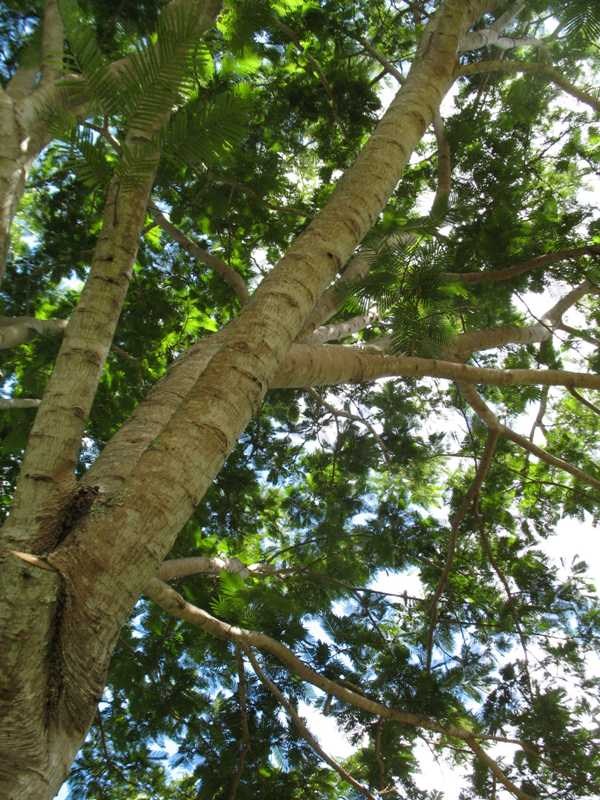Tree bean (Parkia timoriana)
Tree bean
Parkia timoriana commonly called tree bean, is a large, semi-deciduous tree native to lowland, tropical forests in Southeast Asia and northeast India. Common in cultivation and often found as a shade tree in home gardens. Mature trees will reach up to 100′ tall with a broad, spreading canopy of similar width. The bipinnately compound foliage can reach up to 1′ long. Its numerous, small, fine leaflets create a feathery texture. The leaves remain on the tree for most of the year but fall off for a brief time during the dry season. Pear-shaped, pendant clusters of tiny white and yellow flowers bloom in spring and hang from the branches on sturdy stalks up to 5′ long. The flowers are followed by linear, green seedpods (up to 1′ long) that mature to a glossy black. The young, tender pods and seeds can be cooked and eaten.
Genus name honors African explorer Mungo Park (d. c. 180- .
The specific epithet timoriana refers to Timor, an island in Southeast Asia.

Best grown in evenly moist, loamy, well-draining, slightly acidic soils in full sun. Propagate from seed. Hardy in tropical climates Zone 12 and above. To increase germination rate, scarify the seeds and soak in water for 12-24 hours.
| Hardiness zone | 12 - 12 |
| Sun light | Full sun |
| Water | Medium |
| Maintenance | Low |
Larva of the almond moth (Cadra cautella) will eat the seeds and inflorescences.
Commonly planted as a shade tree in home gardens and coffee plantations.
| Common name | Tree bean |
| Botanical name | Parkia timoriana |
| Plant type | Tree |
| Family | Fabaceae |
| Hardiness zone | 12 - 12 |
| Water | Medium |
| Maintenance | Low |
| Flower color | Clusters of white and yellow florets |
| Flowering period | February - April |
| Height | 70 - 100 ft. |
| Width | 70 - 100 ft. |